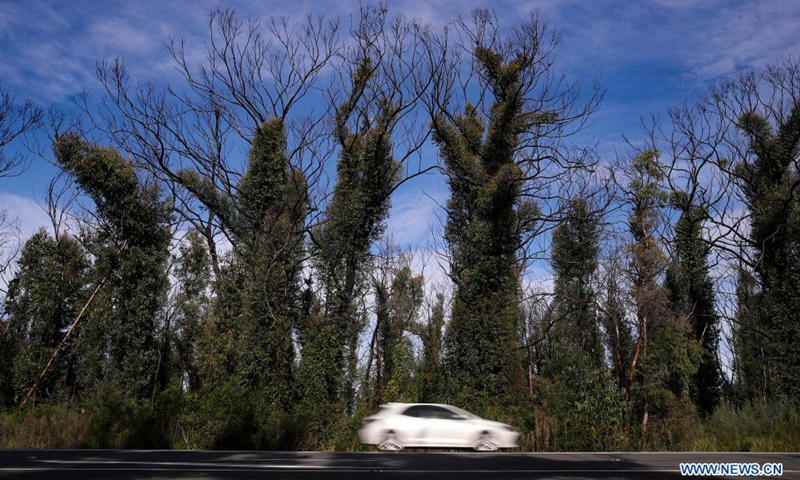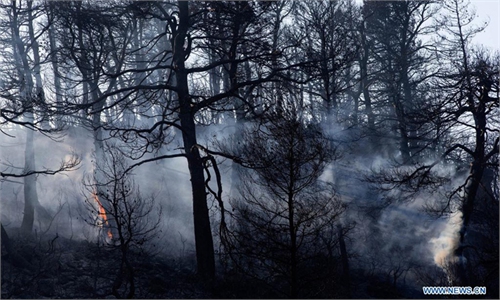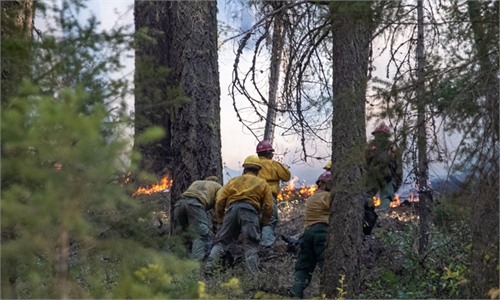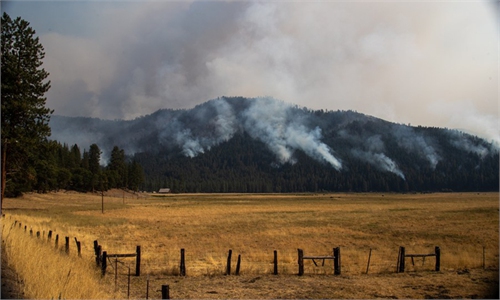Australian disaster boosts CO2, but also carbon-capturing algae: studies
Wildfires lead to climate give and take

Photo taken on June 1, 2021 shows regenerating bushes in the wake of wildfires at Blue Mountain, New South Wales, Australia.Photo:Xinhua
Devastating Australian wildfires released twice as much climate-warming carbon dioxide than previously thought, but also triggered vast algae blooms thousands of miles away that may have soaked up significant extra carbon, according to studies published Wednesday.
Severe summer heat and drought helped spark the fires from late 2019 to early 2020 that killed 33 people and tens of millions of animals, while destroying vast swathes of eucalyptus forest.
These "Black Summer" fires, which enveloped Sydney and other cities in smoke and ash for months, were known to have released huge amounts of carbon dioxide into the atmosphere, but the exact amount was difficult to quantify.
To find out, researchers in the Netherlands used new satellite technology that can monitor the gases released during a fire on a daily basis.
They produced estimates of overall emissions as well as carbon dioxide released, concluding that the amount was more than twice previously estimated from five different fire inventories.
"We found that the CO2 emissions from this single event were significantly higher than what all Australians normally emit with the combustion of fossil fuels in an entire year," said Ivar van der Velde of the SRON Netherlands Institute for Space Research, author of the paper published in the journal Nature.
While it was still uncertain, he said "given current trends in global warming, we believe it is quite possible that we will see more of these types of large wildfires in Australia, and possibly elsewhere. This will likely contribute to even more CO2 in the atmosphere."
Wildfires are consistent with a warmer world, as climate change makes droughts and heat waves more frequent.
Depending on the amount of carbon dioxide that is drawn back into plants as they regrow, the emissions could help drive further warming.
The fires also released aerosols transporting nitrogen and iron particles that can spur ocean "blooms" of microscopic algae, called phytoplankton.
In a separate study in Nature, researchers found that high levels of iron pumped into the air by the fires were blown huge distances, eventually causing a significant increase in phytoplankton in the Pacific Ocean thousands of kilometers from Australia.
Studies suggested wildfires could seed algae blooms, said co-author Joan Llort, of the University of Tasmania's Institute for Marine and Antarctic Studies.
But he said the "most surprising thing was the magnitude" revealed in the research, with blooms covering an area larger than Australia itself. Phytoplankton are crucial in the climate, taking in carbon dioxide as they photosynthesize in a process similar to plants.
Part of that carbon eventually sinks into the deep ocean and is stored.
"Our results provide evidence that iron from wildfires can fertilize the ocean, potentially leading to a significant increase in carbon uptake by phytoplankton," said co-author Nicolas Cassar, of the Nicholas School of the Environment at Duke University.
AFP



